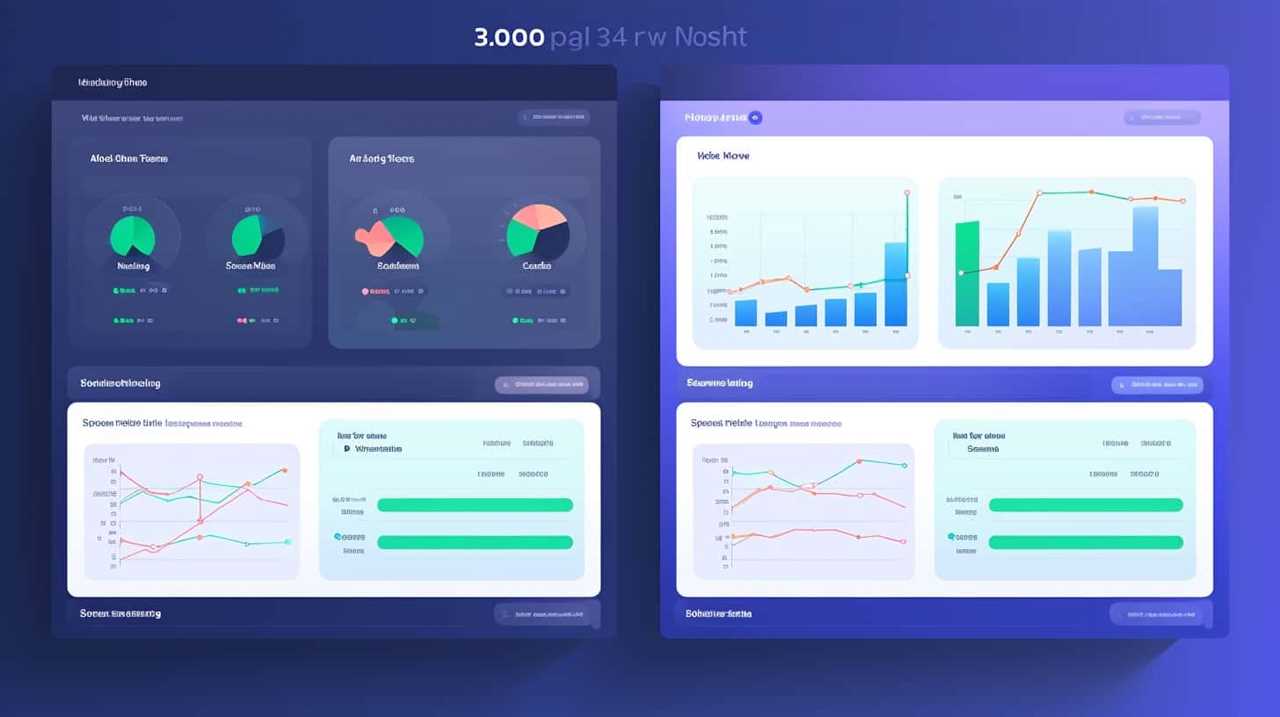Having troubles keeping your SEO content up to par? Search no more! We have put together eleven tips from experts designed to help you create content of consistently high quality.
From conducting thorough keyword research to staying up to date with the latest SEO trends, we’ve got you covered.
With our guidance, you’ll be able to optimize your meta tags, enhance user experience, and effectively promote your content on social media.
Don’t let your SEO efforts go to waste – follow our tips for sustained success!

Key Takeaways
- Conduct thorough keyword research to identify relevant and high-ranking keywords for your content
- Regularly update and refresh content to engage the audience and maintain a strong online presence
- Optimize website navigation and mobile accessibility for a seamless user experience
- Monitor and analyze SEO performance using tools like Google Analytics and SEMrush to continuously improve and adapt SEO strategy
Conduct Thorough Keyword Research
To ensure consistent quality in our SEO content, we conduct thorough keyword research. This process involves analyzing long tail keywords and conducting competitor analysis.
Long tail keywords are specific phrases that users search for, and by incorporating them into our content, we can target a more niche audience. This helps us stand out from our competitors and attract highly relevant traffic to our website.
Additionally, competitor analysis allows us to identify the keywords that our competitors are ranking for and understand their content strategy. By gaining insights from their success, we can develop a more effective content strategy for ourselves.
Conducting thorough keyword research is crucial in optimizing our SEO content and staying ahead in the digital landscape.

Now, let’s delve into the next section and discuss how we develop a content strategy.
Develop a Content Strategy
When it comes to developing a content strategy, targeting the right audience is crucial. By conducting thorough target audience analysis, we can gain insights into their preferences, needs, and pain points, enabling us to create content that resonates with them.
Additionally, utilizing effective keyword research techniques allows us to identify relevant and high-performing keywords, ensuring our content is optimized for search engines.
To maintain consistency and organization, creating a content calendar helps us plan and schedule our content, ensuring a steady flow of quality content for our audience.

Target Audience Analysis
We analyze our target audience to develop a content strategy that effectively engages and satisfies their needs. Understanding the demographics, interests, and behaviors of our audience allows us to tailor our content to their preferences.
Here are five key steps we take in our target audience analysis:
- Target Audience Segmentation: We divide our audience into distinct groups based on factors such as age, location, and interests. This helps us create targeted content that resonates with specific segments.
- Competitor Analysis: We study our competitors’ strategies and identify gaps in their content offerings. This allows us to differentiate ourselves and provide unique value to our audience.
- Keyword Research: We conduct thorough keyword research to identify the terms and phrases our audience uses when searching for information. This helps us optimize our content for search engines and increase visibility.
- Social Media Listening: We monitor social media platforms to understand the conversations and topics that are relevant to our audience. This enables us to create content that addresses their current interests and needs.
- Feedback and Analytics: We regularly gather feedback from our audience and analyze website analytics to measure the effectiveness of our content strategy. This helps us make data-driven decisions and continuously improve our content.
Keyword Research Techniques
How do we effectively develop a content strategy through keyword research techniques that ensure consistent quality in our SEO content?
One key aspect of keyword research is identifying long tail keywords, which are specific and targeted phrases that potential readers may use when searching for information. By incorporating these long tail keywords into our content, we can attract a more qualified audience and increase the likelihood of our content being found by search engines.

Another important technique is competitor analysis, where we analyze the keywords and content strategies used by our competitors to gain insights and identify opportunities. This allows us to stay ahead of the competition and create more valuable and relevant content.
Content Calendar Creation
To effectively develop a content strategy, it’s crucial to establish a comprehensive content calendar that outlines our plan for creating and publishing SEO content. A content calendar serves as a roadmap for our content creation strategy and allows us to stay organized and consistent.
Here are five key steps to effective content calendar management:
- Identify goals and objectives: Determine what we want to achieve with our content and align it with our overall marketing strategy.
- Keyword research: Conduct thorough keyword research to identify relevant topics and optimize our content for search engines.
- Define target audience: Understand our target audience’s needs and preferences to create content that resonates with them.
- Create a content schedule: Set deadlines and milestones for content creation and publication to ensure a consistent flow of high-quality content.
- Track and analyze performance: Continuously monitor and evaluate the performance of our content to identify areas of improvement and refine our content strategy.
By following these steps, we can develop a well-structured content calendar that supports our content creation strategy and helps us achieve our SEO goals.

Now, let’s move on to the next step of optimizing our meta tags and descriptions to further enhance our SEO efforts.
Optimize Your Meta Tags and Descriptions
When optimizing SEO content, it’s essential to focus on optimizing meta tags and descriptions for better search engine visibility. Optimizing meta tags and descriptions involves incorporating relevant keywords that accurately describe the content of the page. By using long tail keyword optimization, you can target specific search queries and attract more qualified traffic to your website.
Meta tags are HTML elements that provide information about a webpage to search engines and website visitors. These tags include the title tag, which appears as the clickable headline in search engine results, and the meta description, a brief summary of the page’s content. By optimizing these tags with targeted keywords, you can improve your search engine rankings and attract more clicks from users.
When crafting meta tags and descriptions, it’s crucial to be concise, engaging, and accurately represent the content of the page. Avoid stuffing keywords or creating misleading descriptions, as this can negatively impact your SEO efforts. Instead, focus on creating compelling and informative meta tags and descriptions that entice users to click on your website in search results.

Focus on User Experience and Readability
When it comes to creating engaging SEO content, we need to focus on user experience and readability.
One important aspect is designing our content in a way that appeals to our target audience and keeps them engaged.
We also need to optimize our content for mobile devices, ensuring that it’s easily accessible and readable on different screen sizes.
Additionally, improving site navigation helps users find the information they’re looking for quickly and easily, enhancing their overall experience on our website.

Engaging Content Design
In optimizing SEO content for consistent quality, we prioritize engaging content design that focuses on enhancing user experience and readability. The way we present our content plays a crucial role in capturing the attention of our audience and keeping them engaged.
To achieve this, we employ various interactive design techniques that make our content more enjoyable and relatable. Here are five key strategies we use:
- Incorporating visually appealing elements such as images, videos, and infographics.
- Using clear and concise headings to break up the text and improve readability.
- Implementing interactive features like quizzes, polls, and surveys to encourage user participation.
- Optimizing our content for mobile devices to ensure a seamless user experience across different platforms.
- Incorporating storytelling techniques to create a narrative that captivates the reader’s interest.
Optimizing for Mobile
To ensure a seamless user experience and improve readability, we prioritize optimizing our SEO content for mobile devices. Mobile optimization is a critical aspect of our strategy, as more and more people are accessing the internet through their smartphones and tablets. By implementing responsive design, we ensure that our content adapts to different screen sizes and resolutions, providing a consistent and enjoyable experience for our users.
In addition to mobile optimization, we also focus on enhancing readability on mobile devices. We understand that reading on smaller screens can be challenging, so we format our content with shorter paragraphs, bullet points, and subheadings to make it easier to scan and digest. By considering both mobile optimization and readability, we provide a user-friendly experience that keeps our audience engaged and coming back for more.

| Key Considerations | Benefits |
|---|---|
| Responsive design | Ensures consistent user experience across devices |
| Shorter paragraphs, bullet points, and subheadings | Improves readability on mobile screens |
| Clear and concise content | Easy to scan and digest |
| Optimized images and videos | Faster loading times |
| Mobile-friendly navigation | Intuitive and easy to use |
Improving Site Navigation
One essential step in improving site navigation for a better user experience and readability is implementing clear and intuitive menu options. By providing users with easily identifiable and organized menu options, they can quickly find the information they need without frustration.
To further enhance site navigation, consider the following tips:
- Streamline the menu: Remove unnecessary items and prioritize the most important pages to reduce clutter and confusion.
- Use descriptive labels: Instead of generic terms, use specific and concise labels that accurately describe the content of each page.
- Provide a search bar: Include a search bar prominently on your website to allow users to quickly find what they’re looking for.
- Utilize breadcrumbs: Breadcrumbs provide users with a clear path of their navigation, making it easier for them to backtrack or explore related content.
- Optimize site architecture: Ensure that your website’s structure and hierarchy are logical and intuitive, allowing for efficient navigation.
Regularly Update and Refresh Your Content
We consistently update and refresh our content to ensure its relevance and effectiveness. Keeping our content up-to-date is crucial for maintaining a strong online presence and attracting organic traffic. Regularly refreshing our content not only improves search engine rankings, but also helps to engage our audience and establish ourselves as experts in our field. By regularly updating our content, we can provide our readers with the most accurate and valuable information available. This ensures that our website remains a go-to resource for those seeking mastery in our niche. To illustrate the importance of content refresh and update, here is a table showcasing the impact of regularly updating and refreshing our content:
| Without Regular Updates | With Regular Updates | |
|---|---|---|
| Search Rankings | Decreases | Increases |
| User Engagement | Decreases | Increases |
| Expert Authority | Diminishes | Strengthens |
| Organic Traffic | Declines | Improves |
Updating and refreshing our content is a key strategy in maintaining a successful SEO content strategy. It allows us to stay relevant, engage our audience, and establish ourselves as industry leaders.

Use Relevant and High-Quality Images
Using a variety of relevant and high-quality images is essential for enhancing the visual appeal and engagement of our SEO content. Images not only break up text and make it more visually appealing, but they also help convey information more effectively.
When it comes to image optimization, here are some key points to keep in mind:
- Choose images that are relevant to the topic and align with the overall message of the content.
- Select high-quality images that are clear, sharp, and visually appealing.
- Optimize images for web by compressing them without compromising on quality.
- Use descriptive file names and alt tags to improve accessibility and search engine optimization.
- Consider using unique and original images to stand out from competitors and provide a fresh perspective.
Incorporate Internal and External Links
When it comes to improving SEO and optimizing your content, incorporating internal and external links is essential. Link-building strategies and SEO optimization techniques play a crucial role in driving organic traffic to your website.
Link-Building Strategies
Incorporating internal and external links is a crucial aspect of effective link-building strategies for sustaining SEO content. By strategically including both types of links in your content, you can improve your website’s visibility in search engine results and drive more organic traffic.

Here are five key strategies to consider:
- Conduct thorough backlink analysis to identify high-quality external websites that can provide valuable backlinks to your content.
- Develop a strong internal linking structure within your website to guide users and search engines to relevant pages.
- Create engaging and informative content that naturally attracts external links from authoritative websites.
- Collaborate with influencers and industry experts to gain backlinks from their websites or social media platforms.
- Monitor and regularly update your existing internal and external links to ensure they remain relevant and functional.
SEO Optimization Techniques
To continue our discussion on sustaining SEO content and link-building strategies, let’s now delve into the effective SEO optimization techniques that incorporate both internal and external links.
SEO optimization techniques play a crucial role in improving search engine rankings and driving organic traffic to your website. When it comes to internal linking, it’s important to strategically place links within your content to guide readers to related articles or pages on your website. This not only helps with navigation but also enhances the overall user experience.
On the other hand, external linking involves linking to reputable and relevant websites, which can improve the credibility and authority of your own content.

To optimize your SEO efforts, it’s essential to conduct thorough keyword research strategies to identify the most relevant and high-ranking keywords for your content. By incorporating these SEO optimization techniques, you can boost your website’s visibility, increase organic traffic, and ultimately achieve higher search engine rankings.
Pay Attention to Page Load Speed
Improving page load speed is crucial for maintaining high-quality SEO content. As website visitors have increasingly shorter attention spans, a slow-loading page can lead to high bounce rates and poor user experience.
To ensure your website performs at its best, consider implementing the following strategies:
- Improve server response time: Optimize your server configuration and reduce the time it takes for your server to respond to requests.
- Minimize HTTP requests: Combine and compress CSS and JavaScript files, reduce the number of images, and use CSS sprites to reduce the number of HTTP requests made by the browser.
- Enable browser caching: Set the appropriate caching headers to allow browsers to store and reuse static resources, reducing the need to download them again.
- Optimize images: Compress and resize images to reduce file size without compromising quality.
- Use a content delivery network (CDN): Distribute your website’s static content across multiple servers geographically to reduce the distance between the user and the server, improving load times.
By implementing these strategies, you can enhance your website’s page load speed and provide a better user experience, ultimately boosting your SEO efforts.

Now, let’s explore how you can leverage social media for content promotion.
Leverage Social Media for Content Promotion
After optimizing your website’s page load speed, we can now explore how we can leverage social media for content promotion.
Social media engagement plays a crucial role in increasing your content’s visibility and driving traffic to your website. By actively engaging with your audience on platforms like Facebook, Twitter, and Instagram, you can create a community around your brand and establish yourself as a thought leader in your industry.
Additionally, influencer collaborations can help amplify your content reach and attract a wider audience. Partnering with influencers who have a strong following in your niche can expose your content to their followers and generate valuable backlinks.

Remember to create shareable content and optimize your posts for social media platforms to maximize your content’s reach and engagement.
Monitor and Analyze Your SEO Performance
In order to effectively monitor and analyze our SEO performance, we need to utilize tools and metrics that provide valuable insights into our website’s visibility and rankings. By tracking our SEO performance, we can identify areas for improvement and make informed decisions to optimize our website’s performance.
Here are five key strategies for monitoring and analyzing SEO performance:
- Utilize SEO performance tracking tools like Google Analytics and SEMrush to measure website traffic, keyword rankings, and user engagement.
- Conduct regular competitor analysis to benchmark our performance against industry leaders and identify opportunities for improvement.
- Monitor key metrics such as organic search traffic, conversion rates, and bounce rates to gauge the effectiveness of our SEO efforts.
- Analyze the performance of individual web pages to identify high-performing content and areas that require optimization.
- Continuously monitor and adapt our SEO strategy based on the insights gained from performance tracking and competitor analysis.
Stay up to Date With SEO Trends and Best Practices
To stay up to date with SEO trends and best practices, we need to consistently monitor and adapt our strategies based on the insights gained from performance tracking and competitor analysis. As search engines evolve, it’s crucial for us to stay ahead of the game and optimize our content accordingly. Here are some key SEO trends and updates that we should be aware of:

| Trend/Update | Importance |
|---|---|
| Mobile Optimization | High |
| Voice Search | Medium |
| User Experience | High |
Mobile optimization remains a top priority as more users access the internet through their smartphones. Voice search is also gaining traction, so optimizing for voice queries is essential. Additionally, user experience plays a crucial role in SEO rankings, so it’s important to focus on factors like page load speed and intuitive navigation. By staying updated on these SEO trends and implementing best practices, we can ensure our content remains relevant and competitive in the ever-changing digital landscape.
Frequently Asked Questions
How Long Does It Take to See Results From SEO Content Efforts?
Measuring success and tracking progress in SEO content efforts can vary depending on various factors. It’s important to consistently monitor metrics and make data-driven adjustments to improve results over time.
Can I Use the Same Keywords for Multiple Pieces of Content?
Yes, we can use the same keywords for multiple pieces of content. However, it’s important to conduct thorough keyword research to ensure that the keywords are relevant, competitive, and can effectively drive traffic to our website.
Is It Necessary to Update Old Content or Can I Focus on Creating New Content?
Updating old content is essential for maintaining SEO rankings. While creating new content is important, refreshing existing pieces ensures they remain relevant and valuable. Both strategies are necessary for long-term success.

How Do I Know if My Content Is Reaching the Right Target Audience?
To know if our content is reaching the right target audience, we analyze our target audience and measure content engagement. This helps us optimize our content to ensure it resonates with our desired audience and drives the desired results.
What Are the Best Practices for Optimizing Images for Seo?
When it comes to optimizing images for SEO, there are several key techniques to keep in mind. One important aspect is the use of alt tags, which play a crucial role in improving search engine visibility.
Conclusion
In the ever-changing world of SEO, maintaining consistent quality content is crucial.
By conducting thorough keyword research, developing a content strategy, and optimizing meta tags and descriptions, we can ensure our content ranks well and reaches our target audience.

Regularly updating and refreshing our content, paying attention to page load speed, and leveraging social media for promotion are also essential.
By monitoring and analyzing our SEO performance and staying up to date with trends and best practices, we can stay ahead of the game and continue to thrive in the digital landscape.










